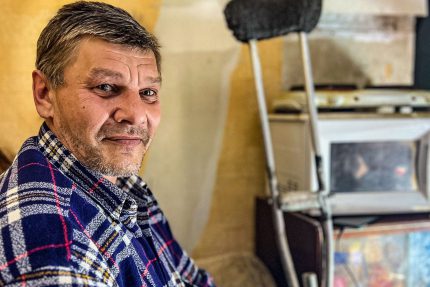One, two, three, four, five… The preschoolers and school children count aloud to one hundred. Two minutes. That’s how long the pauses between artillery fire lasted. The bodies of people who did not know when to flee lay in the streets. Mariupol was full of bomb craters, piles of rubble and soot-blackened ruins. Life had vanished. It moved to the basements and shelters.
Six, seven, eight, nine, ten… Only to one hundred. The rest, twenty seconds, to run into the basement of a scorched building. We had to leave some spare time in case they loaded the guns faster and started shooting.
“We crowded into a damp, stuffy and dark room in the basement of some block of flats. It was impossible to stand. The floor and walls trembled. People were fainting from fear and lack of air,” Nadia says, shaking her head. She does not lose her voice, nor does she burst out crying. She talks calmly, her breathing steady. She has already cried all her tears. She recounts stills from the action. She doesn’t want to remember that she starred in it.
Eleven, twelve… The children measure time well. They chant the numbers out loud in one-second intervals, as if they were doing rhythmics in kindergarten in front of a teacher with a drum. The older ones are nervously pacing around, looking up at the sky. They are breathing deeply, a little extra, because they know that when the kindergarteners count to a hundred, they will have to run into the darkness, the crowding and the stuffiness.
Among the group of exhausted people stands Luba, a pregnant woman in her thirties. She doesn’t have the strength to run back to the shelter. She tries to fill her lungs with fresh air, but is unable to catch her breath. She tries not to cry, but the tears flow on their own.
The children finish counting. Again, it is necessary to hide. They are going to shoot. That’s for sure. Luba stays.
“Just a little longer. I’ll be right there.” raising her hand, she ensures she knows what she’s doing. Nadia hurries the last children. Again they have done a great job timing a two-minute break in the gunfire. As she turns to hurry Luba, the first shell explodes at the pregnant woman’s feet and rips her body to shreds. The air fills with smoke, the smell of gunpowder and blood.
“Run! Don’t look back!” she shouts to the children. Luba will not be saved. The children’s memories need to be saved instead.






